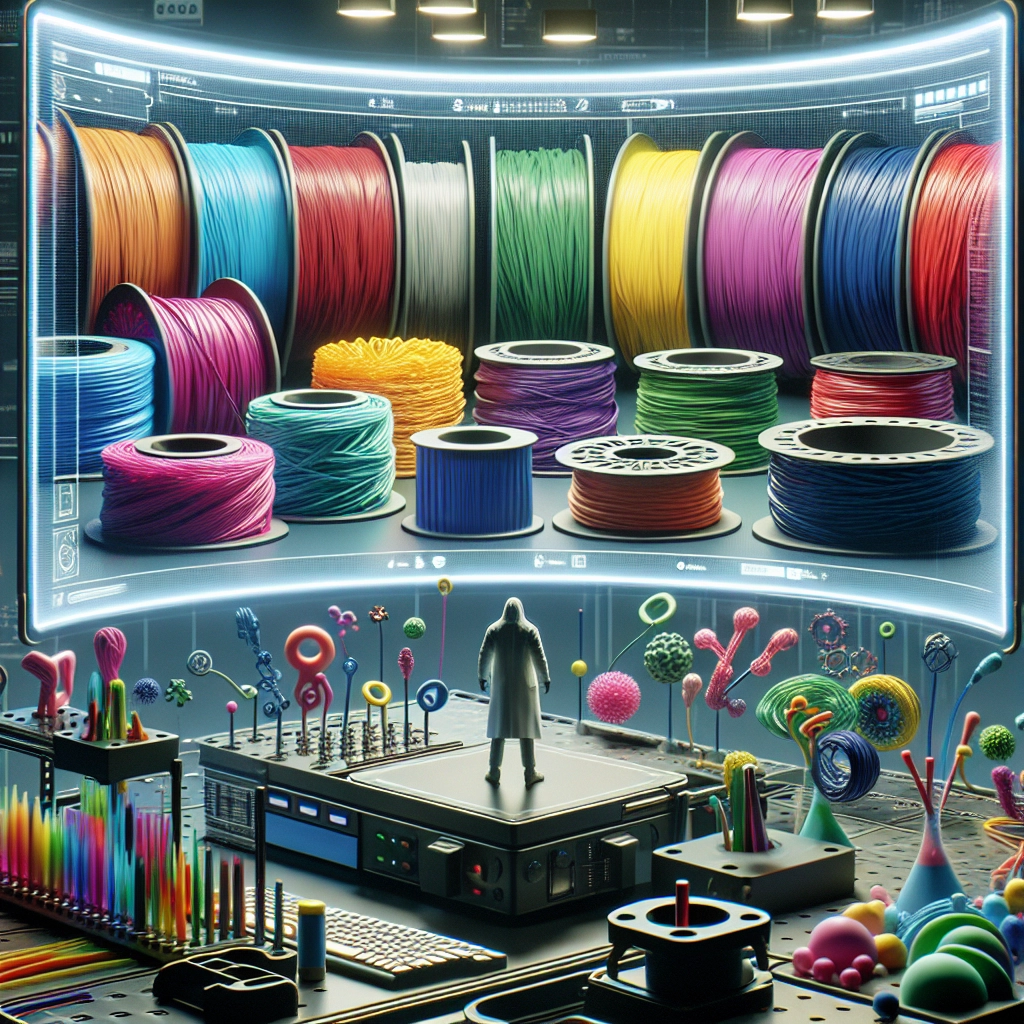Exploring the Future of Sustainable 3D Filaments
In recent years, 3D printing has transformed from a high-tech novelty to an everyday tool for hobbyists, educators, and manufacturers alike. With its growing popularity comes an important question: how can we make this innovative technology more sustainable? Enter the world of sustainable 3D filaments, where innovation meets environmental responsibility. As we delve into this vibrant landscape, it’s exciting to see how new materials and practices are paving the way for a greener future.
Understanding 3D Filaments
Before we dive into sustainable options, let’s quickly recap what we mean when we talk about 3D filaments. In the realm of 3D printing, filaments are the plastic materials that are melted down and extruded to create objects layer by layer. The most common types include PLA (polylactic acid), ABS (acrylonitrile butadiene styrene), and PETG (glycol-modified polyethylene terephthalate). Traditionally, these materials have raised concerns about environmental impact, mainly due to their petroleum-based origins and difficulties in recycling.
The Shift Towards Sustainability
As awareness of plastic pollution mounts, so does the demand for sustainable alternatives. This is where sustainable 3D filaments truly shine. Manufacturers have started to explore a variety of materials sourced from renewable resources, recycled plastics, and even biodegradable options. Let’s take a look at some of the most promising developments in this space.
Biodegradable Filaments
PLA, the darling of the 3D printing world, is derived from corn starch or sugarcane, making it a more eco-friendly choice than traditional plastics. Although PLA can take years to decompose in a landfill, its biodegradable properties, when processed correctly, make it a popular option for those looking to lessen their carbon footprint. Innovations in biotechnology are leading to even more advanced biodegradable filaments made from materials like cellulose and aliphatic polyesters. These cutting-edge materials can break down in compost conditions, paving the way for more environmentally responsible 3D printing.
Recycled Filaments
Recycling is an essential part of sustainability, and the 3D printing community is catching on. Companies are now offering filaments made from recycled plastics, significantly reducing the need for new raw materials. One example is rPET, a filament made from recycled PET bottles. By transforming waste into 3D printing material, these filaments help keep plastic out of landfills while offering the same print quality as their virgin counterparts. Plus, using rPET provides a unique opportunity to raise awareness about the importance of recycling in our daily lives.
Natural Fiber Blends
Another intriguing trend in sustainable 3D printing is the use of natural fibers to enhance traditional filaments. Materials like hemp, bamboo, and even wood particles are being mixed with plastics to reduce the reliance on synthetic materials. These natural fiber blends not only retain strength and usability but also add appealing aesthetic qualities to printed objects. Imagine a lamp shade that looks like reclaimed wood or a decorative item infused with a subtle earthy scent—there are so many exciting possibilities!
Improved Production Methods
While the type of materials used is critical, how these materials are produced matters just as much. Sustainable practices in filament production—like reducing energy consumption, minimizing waste during manufacturing, and employing non-toxic additives—are becoming increasingly common. As eco-conscious manufacturers emerge, consumers will have more options to choose from, guiding the industry toward a more responsible future.
Challenges and Considerations
While the strides made in sustainable 3D filament technology are impressive, challenges still remain. Availability and cost can be barriers for some users. Many sustainable filaments are still more expensive than traditional options, which can deter hobbyists and small businesses. Additionally, awareness is key; many may not realize the benefits of choosing sustainable materials over standard ones. Education about the environmental impact of 3D printing is crucial to help drive the adoption of eco-friendly alternatives.
Ultimately, the future of sustainable 3D filaments looks promising. Through innovation and a collective commitment to the environment, we are closer than ever to reducing the ecological footprint of 3D printing. As technology evolves and more sustainable options become available, we can look forward to a future where creativity and sustainability go hand in hand. So the next time you fire up your 3D printer, consider reaching for a sustainable filament, and play your part in this exciting transformation!

